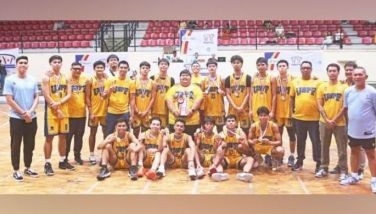Protocols

The incident investigation and review committee convened by the Palace has commenced work under the glare of live media coverage. That live coverage indicates that public interest in that carnage at the Luneta has not waned. The initial round of interpellations revolved around the protocols that needed to be observed when a crisis situation breaks out. From what we have heard so far, it is apparent that we did not lack in spelling out the protocols. They were there for officials at all levels to know by heart. The only question to be resolved involves updating existing protocols to the level of global best practices.
These protocols are no doubt important. When a crisis breaks out, there is no time to squabble over who takes charge of what. The protocols spell that out.
Despite the existence of the protocols, there remains large room for judgment calls. For instance, as pointed out by the committee, did not the involvement of foreign nationals as hostages indicate that the crisis was immediately more than a local concern?
In the early stages, at least, it seems the standing protocols were well-observed. In such an incident, a crisis management committee is immediately convened. It is chaired by the mayor. A ground commander, normally the chief of the local police force, takes control of the situation. A hostage negotiator is designated.
In the case of the Luneta incident, the crisis management committee was chaired by Manila Mayor Alfredo Lim. The ground commander was erstwhile Manila police chief Magtibay. The negotiator was Supt. Yebra, who was trained for such an assignment.
Through the first hours of the hostage drama, the arrangement appeared to work out well. Several hostages were released in exchange for food and water. As we now know, officials from the Korean embassy initially and then from the Chinese embassy were immediately on the scene.
As the situation began to drag on, there is now question about when the matter should have been elevated from the level of a local crisis committee to a national crisis committee. That might have improved handling of the members of media present, the decision to call in better-equipped units to take over the ground situation and the deployment of a much better crisis communications team.
It is not true that our specialized police and military units are not as miserably trained as that one which we saw on live television conducting the assault. The NBI had deployed its special unit just in case. There was a SAF unit on the scene which was better trained and better equipped that the MPD SWAT team. The military had also, on its own initiative, deployed a special operations group to the site, in case they were needed.
None of those more competent units were used in the assault, save for the snipers who finally took down the hostage taker from a distance. The MPD decided to use its own boys. Defining the crisis as a local concern ought not to have meant that its handling would be defined by parochial considerations.
It turns out, according to reports, that the Manila Police did have a better-trained SWAT team before. But that team was disbanded by Mayor Lim. The new team had barely received training. That was evident, from what we saw.
As the inquiry progresses at the hurried pace set by its chair, we expect many of the hanging questions to be suitably answered. This whole exercise is useful not so much in pinning blame for a tragic event that already happened and whose whirlwind the nation now reaps. That exercise should, at its conclusion, result in improving our protocols and upgrading our capacities to deal with crisis situations.
The most critical question, it now seems, is when should higher authorities step in and take control of the situation away from the local authorities? Whose call is it? The PNP chief? The DILG secretary? The President of the Republic?
The existing protocols do not seem clear on the matter of escalating control of the situation. Had the DILG secretary stepped into the picture, wouldn’t that have been resisted by the Manila Mayor, invoking protocol?
Even as existing protocols were kept and control over the situation remained with the local crisis committee, we now know that some sort of “command post” was set up at Emerald restaurant by President Aquino. Mayor Lim left his own command post at the Luneta during the critical time when things began turning for the worse because, he says, he was summoned by the President to Emerald restaurant.
Emerald restaurant, I am told, has the best siopao in town. But other than that distinction, it is hardly equipped to serve as a command post for anything other than a food binge. The place did not even have a working television set for monitoring the situation. It was much farther from the scene than, say, the Western Police District headquarters which had the facilities for incident management.
At any rate, when President Aquino, Mayor Lim, Secretary Robredo and top police officials finally convened at the Emerald, the shooting had already started. There was not much more about the incident to be managed. It was simply too late.
There is no report that indicates the President, after Emerald, visited the nearby hospitals where the injured hostages were rushed. In fact, we don’t know what happened after Emerald. A full four hours would lapse before the President appeared on television. When he did, he tried to downplay the scale of the tragedy — to the dismay of the people of Hong Kong.
Surely there is much to be learned from this sad episode. It will not be enough to say we learned them well and will do better next time.
The lessons will have been fully grasped if these are worked into the standing protocols for incident management. The improved protocols will not just help assuage the sentiments of the people of Hong Kong. More important, the improved protocols might, in the future, save us from our own folly.
- Latest
- Trending


























